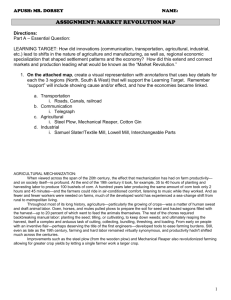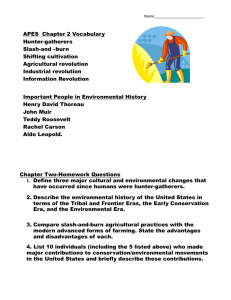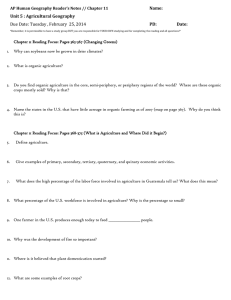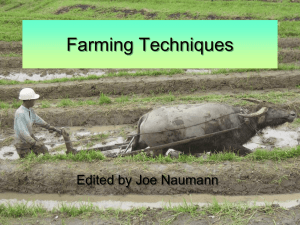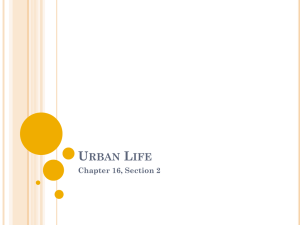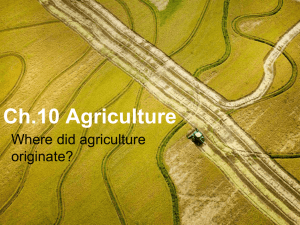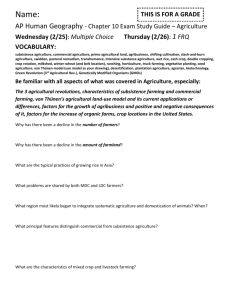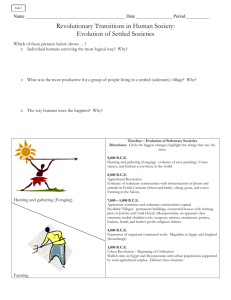AP Human Geography Final Exam Review Sheet Units 5, 6 and 7
advertisement
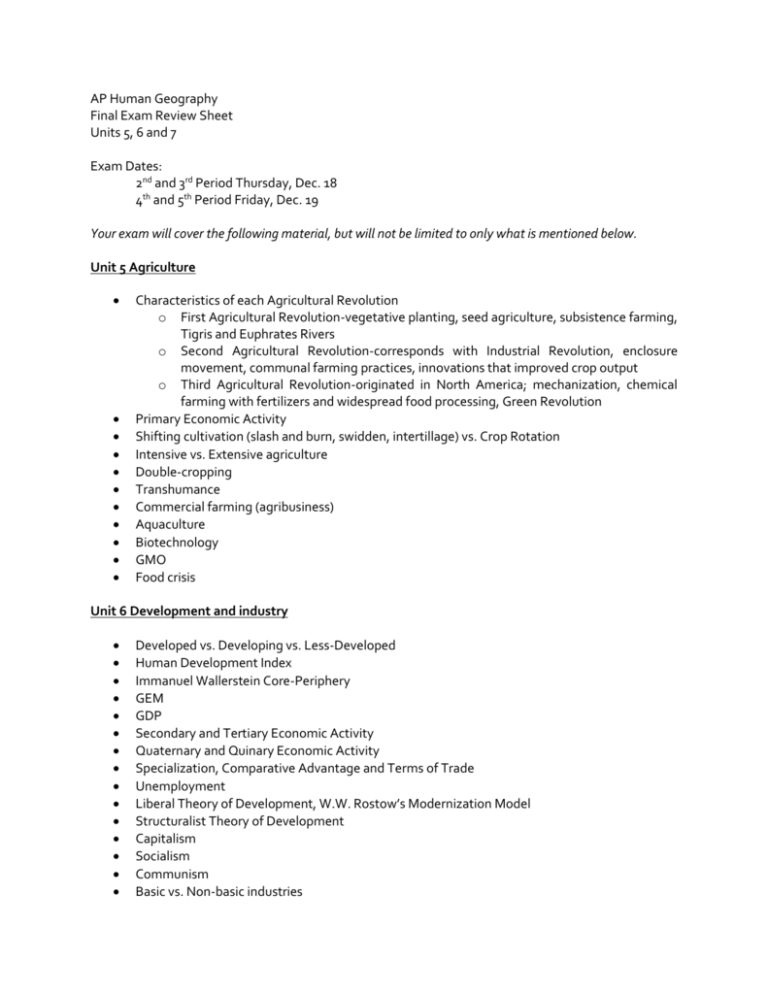
AP Human Geography Final Exam Review Sheet Units 5, 6 and 7 Exam Dates: 2nd and 3rd Period Thursday, Dec. 18 4th and 5th Period Friday, Dec. 19 Your exam will cover the following material, but will not be limited to only what is mentioned below. Unit 5 Agriculture Characteristics of each Agricultural Revolution o First Agricultural Revolution-vegetative planting, seed agriculture, subsistence farming, Tigris and Euphrates Rivers o Second Agricultural Revolution-corresponds with Industrial Revolution, enclosure movement, communal farming practices, innovations that improved crop output o Third Agricultural Revolution-originated in North America; mechanization, chemical farming with fertilizers and widespread food processing, Green Revolution Primary Economic Activity Shifting cultivation (slash and burn, swidden, intertillage) vs. Crop Rotation Intensive vs. Extensive agriculture Double-cropping Transhumance Commercial farming (agribusiness) Aquaculture Biotechnology GMO Food crisis Unit 6 Development and industry Developed vs. Developing vs. Less-Developed Human Development Index Immanuel Wallerstein Core-Periphery GEM GDP Secondary and Tertiary Economic Activity Quaternary and Quinary Economic Activity Specialization, Comparative Advantage and Terms of Trade Unemployment Liberal Theory of Development, W.W. Rostow’s Modernization Model Structuralist Theory of Development Capitalism Socialism Communism Basic vs. Non-basic industries Fixed costs vs. Variable costs Time-space compression Dependency Theory International division of labor Laffer Curve and Reaganomics Agglomeration vs. Deglomeration Industrial Revolution (Where? Why? Weber’s Least Cost Theory (bulk-gaining vs. bulk-reducing) Maquiladoras NAFTA Transnational corporations Footloose industry Fordist vs. Post-Fordist Just-in-time Delivery Planned Obsolescence Labor intensive Export Processing Zones Special Economic Zones Deindustrialization Foreign Direct Investment Vertical Integration Outsourcing/Offshoring Hotelling’s Model Losch’s Model (Zone of Profitability) Ecotourism Tragedy of the Commons Negative vs. Positive Externalities Coase Theorem Pigouvian Tax Acid Rain Water Crisis (Israel, California, Aral Sea) Global Warming The Lorax Unit 7 Urbanization European city model Gateway city Walter Christaller Central Place Theory George Zipf Rank-size Rule Primate city Megacity Overurbanization Counterurbanization Asian city model Sub-Saharan Africa city model Latin American city model Squatter settlements (barriadas, favelas) Middle East city model World City Alpha, Beta, Gamma cities Central Business District Zone in transition Segregation Enclaves Ghettos (“The Trap”) Invasion and succession Gentrification Infrastructure problems (Brownfield sities) Poverty and homelessness Redlining Blockbusting Bazaar Sprawl Edge cities Megalopolis Boomburbs Outlying business district Hoyt Sector Model Burgess Concentric Zone (Ring) Model Harris and Ullman Multiple Nuclei Model Peripheral Model Settlement hierarchy (hamlet, village, town, city, metropolis) Bid-rent Theory Grid street system Dendritic pattern Greenbelt In-flling Zoning laws Entrepot High tech corridor Multiplier effect Hinterland White flight Your APHG Final Exam will consist of 65-80 multiple choice questions and counts 15% of your final average for the class.

